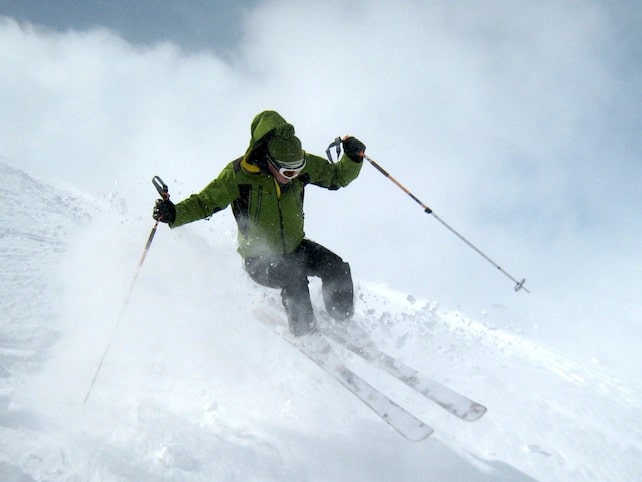
The 2013-14 was a little slow out of the starting blocks, but the snow is finally here. This is the time of the season when many people get back on their skis after 10 or 12 months off and just hope that the memory of those glorious turns at the end of last season will be enough to hold everything together when facing the first tricky morning of the season back on skis. Here are a few tips that might just help:

1. Yours Skis
They’re fundamental to all that we do on snow but many people simply pull them out of the garage making sure they look like the ones they thought they used last year and then head for the hills. It always pays to have a good service done to sharpen up the edges, fill in any gouges and get the bases running smoothly.
If you’re lucky enough to have new skis, then a bit of care before you use them will pay huge dividends. The edges on brand new skis are often far too sharp for normal skiing and can render them almost unskiable. The tips and tails can catch and sending you flying before you’ve had time to curse the bloke in the shop who convinced you to get them. The best way to avoid this sort of problem is simply to take a sheet of medium-grade sandpaper and smooth out the edges about 10-15cm from the tails and tips. Silky smooth turns and perfect grip underfoot when you need it – guaranteed.

Your Ski Boots
Skis boots can sometimes seem like the modern equivalent of the medieval Iron Maiden, clamping your feet in a vice-like grip that can cause the grown men cry. It may be some consolation that even the toughest of Mountain Guides suffer exactly the same way, particularly the first time they ski off-piste in new boots.
The solution is to get to know a decent boot fitter and don’t be in a hurry when buying them. You’ll find that ski boots are more expensive in many ski resorts (like everything), but at least you can go straight back to the shop and have them adjusted the same evening.
A very useful tip is not to tighten them too much for the first few hours of use and, if you can, take them off whilst having lunch – fresh socks can come in handy too. Cramped feet and bruised shins do not make for happy skiing so, unless you have an appointment with a set of slalom poles on the first morning of your holiday, leave them relatively loose and tighten them as you go along.
Many alpine-style boots now have rubber soles as opposed to the smooth, shiny, skid-tastic ones that manufactures thought were a good idea for so many years. These new grippy, contoured soles combined with an extra “walk mode” clip at the back, can turn the stroll to the cable-car down icy resort pavements into a pleasurable experience rather than the tottering, awkward and downright dangerous kerfuffle the old-style smooth-soled boots offered for no extra charge.

3. Your Bindings
Always get your bindings looked at by a qualified technician before you head out at the start of the season. Just like any other piece of engineering, they need oiling and checking to make sure they are in perfect working order and adjusted for your weight and ski style.
If you’ve bought new boots then always check that they fit your bindings, the size and shape of boot shells varies substantially and it’s never much of a pleasure to be wrestling with a micro-screwdriver in a raging blizzard trying move your binding forward that crucial centimetre than can render even the most sophisticated set of equipment effectively useless.
4. You
Getting fit before a ski trip is always going to pay dividends, but there are a couple of things that can really help. Firstly try to include some uphill training in your routine; this helps strengthen your legs and improves your cardiovascular abilities – particularly if you fancy a trip off-piste. Once you’re on holiday, stretch out at the end of each day – this may sound boring after a comforting vin chaud or two but it’ll mean you’ll have usable legs the next morning.

5. Off-piste safety kit
If you’re planning to venture into the backcountry then checking your avalanche beep, shovel, probe and the rest of the kit you’ll need is crucial. Always change the batteries in your beep at the start of the season and practice what to do in case the worst ever happens – i.e. know how to find someone who’s buried – particularly if you have a new device, know how to call the rescue services where you’ll be skiing and take a refresher course on mountain safety.














“@welove2ski: A few early season skiing tips that might help you get back on the piste: https://t.co/CskzvjVu4R” Sound advice everyone!